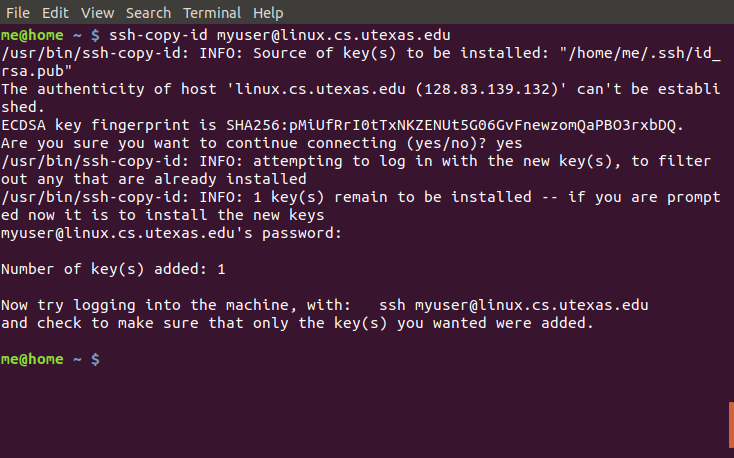

This guide showed you how to use the ssh-copy-id command to install SSH keys on remote hosts.

To view the help page, use the command ssh-copy-id -h or use the ssh-copy-id command with no arguments. You can modify how the ssh-copy-id command works by using the provided arguments. The system may prompt you to enter the passphrase of the key that you set up earlier. The command above should allow you to log in to the remote host without asking for the user’s password. This tool generates public and private key files stored in the ~/.ssh directory, as shown below.Įnter passphrase for key '/root/.ssh/id_rsa': To generate an SSH key, use the ssh-keygen tool that comes as a part of OpenSSH. To use an SSH key, we will begin by generating a key.

#Ssh copy id not working password#
SSH keys are automated, and once authorized, do not require a password at each login. SSH keys are more secure than raw passwords and provide a much more efficient way of logging into SSH. Public SSH key authentication is an SSH authentication method that allows users to use cryptographically generated keys to log into remote servers. NOTE: If you already know how SSH public key authentication works, feel free to skip this part and dive deeper into how to use the ssh-copy-id command immediately. Before we dive into how to use the tool, we will first discuss how SSH public key authentication works. Using ssh-copy-id is simple because the script makes the public key authentication process easier and more efficient. ] hostname -f: force mode - copy keys without trying to check if they are already installed -n: dry run - no keys are actually copied -h |-?: print this help


 0 kommentar(er)
0 kommentar(er)
